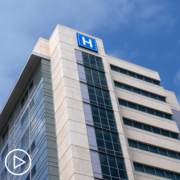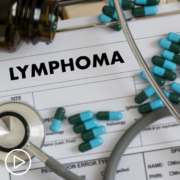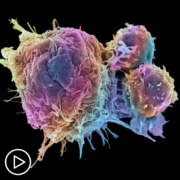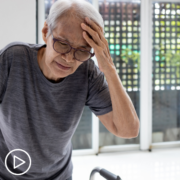An Expert Overview of DLBCL Treatment Approaches from Patient Empowerment Network on Vimeo.
How is Diffuse Large B-Cell Lymphoma (DLBCL) treated? Dr. Jason Westin provides an overview of current DLBCL approaches.
Dr. Jason Westin is the Director of Lymphoma Clinical Research in the Department of Lymphoma/Myeloma in the Division of Cancer Medicine at The University of Texas MD Anderson Cancer Center. Learn more about Dr. Westin, here.
See More From The Pro-Active DLBCL Patient Toolkit
Related Programs:
Transcript:
Katherine:
So, once it’s time to treat, then of course it’s time to think about treatment options. So, let’s walk through the types of therapy that are used today in DLBCL treatment. First of all, let’s talk about chemotherapy.
Dr. Westin:
Yeah. So, unfortunately, chemotherapy is still the – cornered the realm when it comes to DLBCL therapy, especially in the frontline setting. So, if a patient is newly diagnosed, no prior history of DLBCL, biopsy comes back and describes that’s what we’re looking at, the standard treatment, which has been around for about 40-plus years, is a combination of chemotherapy called CHOP, each letter representing a different medication. The antibody immunotherapy Rituxan, or rituximab, was added about 20 years ago.
So, the standard treatment for the past 20 years has been R-CHOP. And this has been tried and true. It’s been tested many, many times to try and improve this or to beat this. And R-CHOP has been less toxic than other alternatives or as good as other alternatives through many, many, many trials.
Now, late last year, in 2021, there was finally a randomized Phase III trial that showed, in addition of a targeted therapy in place of one of the chemotherapy drugs, had a slightly better progression free survival at two years. The targeted therapy here is a drug called polatuzumab. Polatuzumab is an FDA-approved therapy for large B-cell lymphoma patients in the US. Currently, as of the time we’re taping this, it’s approved for patients with relapsed disease. It’s not yet approved, based on this Phase III trial, but that may change in the coming months.
The improvement was modest. Around six percent of patients differing in terms of those who had progressed versus those who had not progressed in two years. So, not an earthquake, but R-CHOP or variations of R-CHOP are still a standard treatment for patients, outside of a clinical trial, of newly diagnosed diffuse large B-cell lymphoma.
Katherine:
And what about CAR T-cell therapy?
Dr. Westin:
The other treatment classes, the targeted therapies include CAR T-cell, or other antibody drug conjugates, immunotherapies, bispecific [antibodies] – there is a lot going on in new drugs and new drug development for DLBCL.
As of today, most of those therapies that are approved are looked at in patients that have already had a frontline chemotherapy approach and the cancer has come back. So, those are approved. But they’re either approved for patients in second line therapy – after having had one line, cancer comes back and now we’re in second line – or in third line therapy, two previous treatments and now we’re in third line treatment. There’s a lot of clinical trials, and I think we’ll talk maybe about clinical trials in a bit, that are exploring use of these targeted therapies, including CAR T-cells, including bispecific antibodies, including other targeted therapies as a potential for a frontline treatment.
But outside of a clinical trial, R-CHOP or versions of R-CHOP are still the standard today.
Katherine:
And what about stem cell transplant?
Dr. Westin:
Stem cell transplant’s been a second line therapy option, and it’s been the standard second line therapy for about 25 years. We’ll see this change in the coming years. There have recently been three randomized clinical trials comparing stem cell transplant versus CAR T-cell. All three of those reported out some information in late 2021, with two of them having final results, one of them having an interim report. And one of the final reports, one the interim reports, showed a significant improvement in chance of staying in remission in all the outcomes that were measured for CAR T-cell beating stem cell transplant.
So, we’re waiting to see how the health authorities view these clinical trials, if CAR T-cell potentially moves into second line treatment for a majority of patients instead of stem cell transplant. So, stem cell transplant’s been there, it’s tried and true. It has cured a significant portion of patients. However, CAR T-cells potentially are better and may be moving in the second line within the next year.













